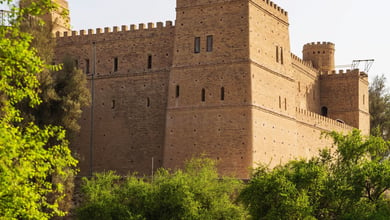Alamut Castle: The Mystery of the Assassins’ Fortress
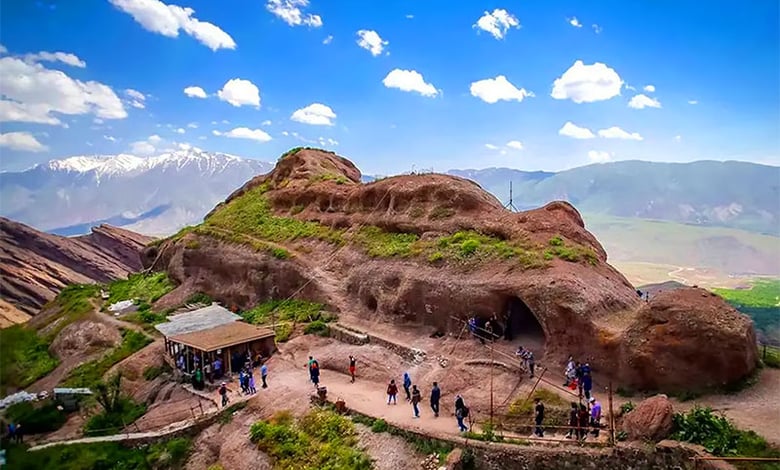
Explore the legendary Alamut Castle, a historic fortress situated in the Alborz mountain range of Iran. Renowned for its strategic importance and breathtaking views, this site once functioned as the base of operations for the Assassins led by Hasan-i Sabbah in the late 11th century. Today, Alamut Castle draws visitors keen to investigate its ruins and learn about its captivating history.
Positioned atop the peaks of the Alborz Mountains in northwest Iran, Alamut Castle stands as one of the country’s most iconic and enigmatic castles. While only the ruins of this once grand fortress remain, its historical significance and the surrounding legends still make it a compelling destination.
In this article, explore the story of Hassan Sabbah and Alamut Castle, famously known as the “Fortress of Assassins.”
Contents
Where is the Alamut Castle?
Alamut Castle in Qazvin Province, northwest Iran, stands as a testament to ancient fortifications. What remains today, approximately 30% of its original 20,000 square-meter expanse, began construction in the 9th century.
Perched atop a hill at 1800 meters, the castle features distinct upper and lower sections, encased by quadruple walls and natural cliffs, contributing to its reputation as an impenetrable stronghold.

The castle’s notoriety peaked under the leadership of Hassan Sabbah, a formidable Ismaili Shia sect propagandist. During his rule, Sabbah led a resistance against the Seljuk dynasty, the then-ruling power in Persia.
Known for orchestrating strategic assassinations, Sabbah and his followers earned Alamut the moniker “Castle of Assassins,” a name that echoes its intriguing past.

The Story of the Alamut Castle
The story of the Alamut Castle starts in 891, when an ancient Persian king decided to start the construction of the castle.

Two centuries before the reign of Hassan Sabah, this king was on a hunt when he saw a large eagle perched on top of a remote hill. Seeing this as a favorable omen and realizing the strategic value of the location, the king chose to build a castle there and to name it “Alamut”, which can translate to “Eagle’s nest”.

Who was Hassan Sabah?
Hassan Sabbah (Hasan-i Sabbah) was a pivotal figure in medieval Islamic history, renowned as the founder and leader of the Nizari Ismaili sect, often referred to as the ‘Assassins‘. Born in 1050 in Qom, Iran, Sabbah was a brilliant student, deeply engaged in religious and philosophical studies. His quest for political and religious influence led him to seize the Alamut Castle in 1090, which he transformed into the headquarters for his mission.
Under Sabbah’s leadership, the Assassins grew into a formidable group known for their strategic skills in espionage and targeted killings, which they used to defend their autonomy against larger political entities in the region. Sabbah’s methods and teachings left a lasting mark on the socio-political landscape of the Middle East. His leadership lasted until his death in 1124, but the legacy of his strategic mind continued to influence the Assassins for generations.
Hassan Sabbah and the Ismailis’ Story
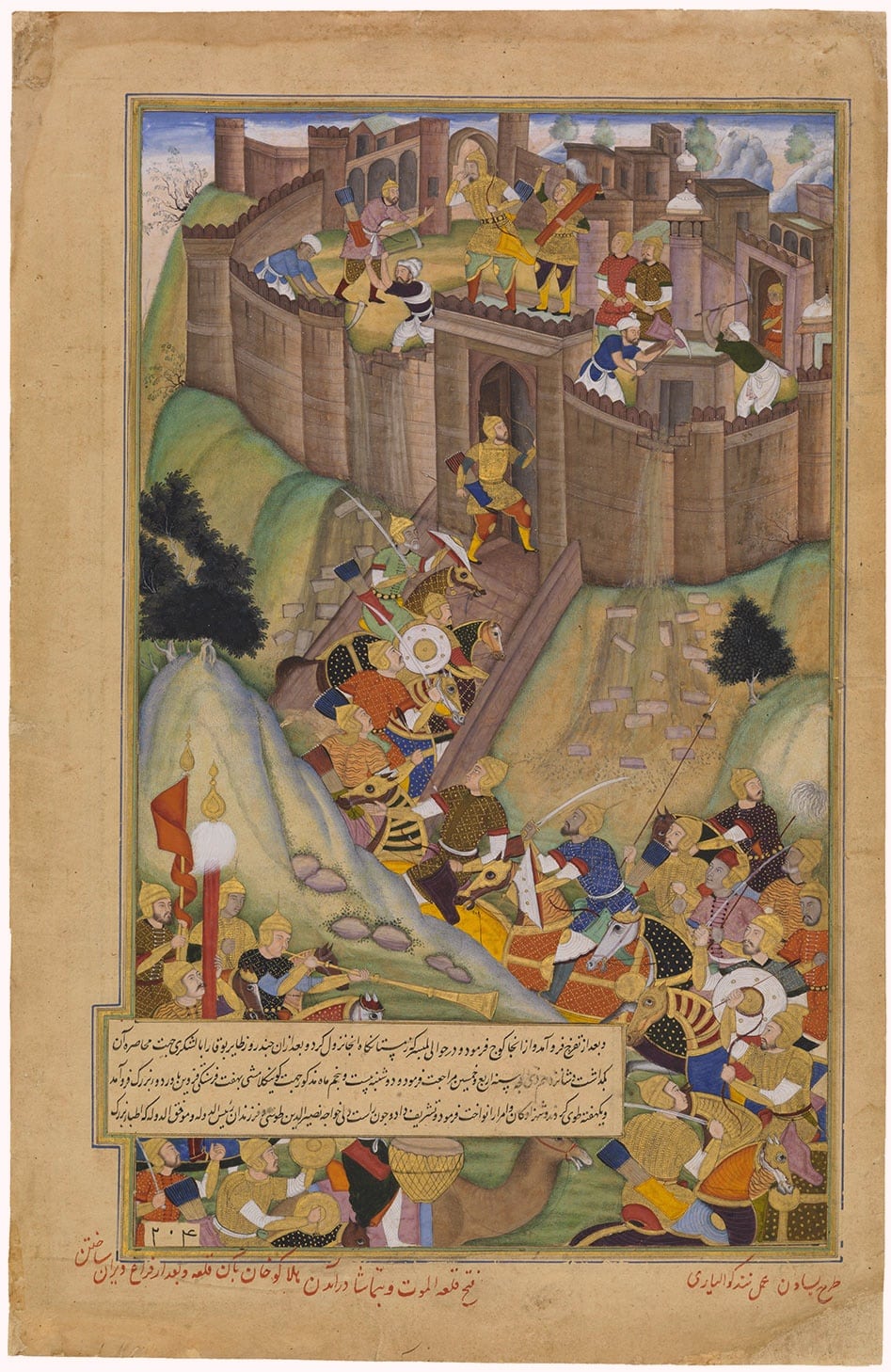
The Alamut fortress, historically renowned as the stronghold of the Nizari Ismailis—often referred to as the Assassins—held significant strategic and symbolic importance. Hulagu Khan, the grandson of Genghis Khan and a key figure in the expansion of the Mongol Empire, led the siege that eventually overcame the fortress’s defenses. This event, which took place in the 13th century, marked a pivotal point in the history of the Ismaili sect as well as the broader region’s power dynamics.
It was in 1090 AD that the castle entered fame. This was when Hassan Sabbah took the castle to make it the center of the Ismailis. The Ismailis, also called Niazaris, are an esoteric branch of Shia Islam, that was persecuted by the Seljuk Empire.
There are various stories detailing how Hassan Sabbah took the castle. Some said he disguised himself as a teacher, others said he gradually converted locals and guards to infiltrate the castle.
Whichever technique he used, it is said that he took control of the castle without spilling a drop of blood, and he would even have paid the former owner of the castle when taking it upon him.
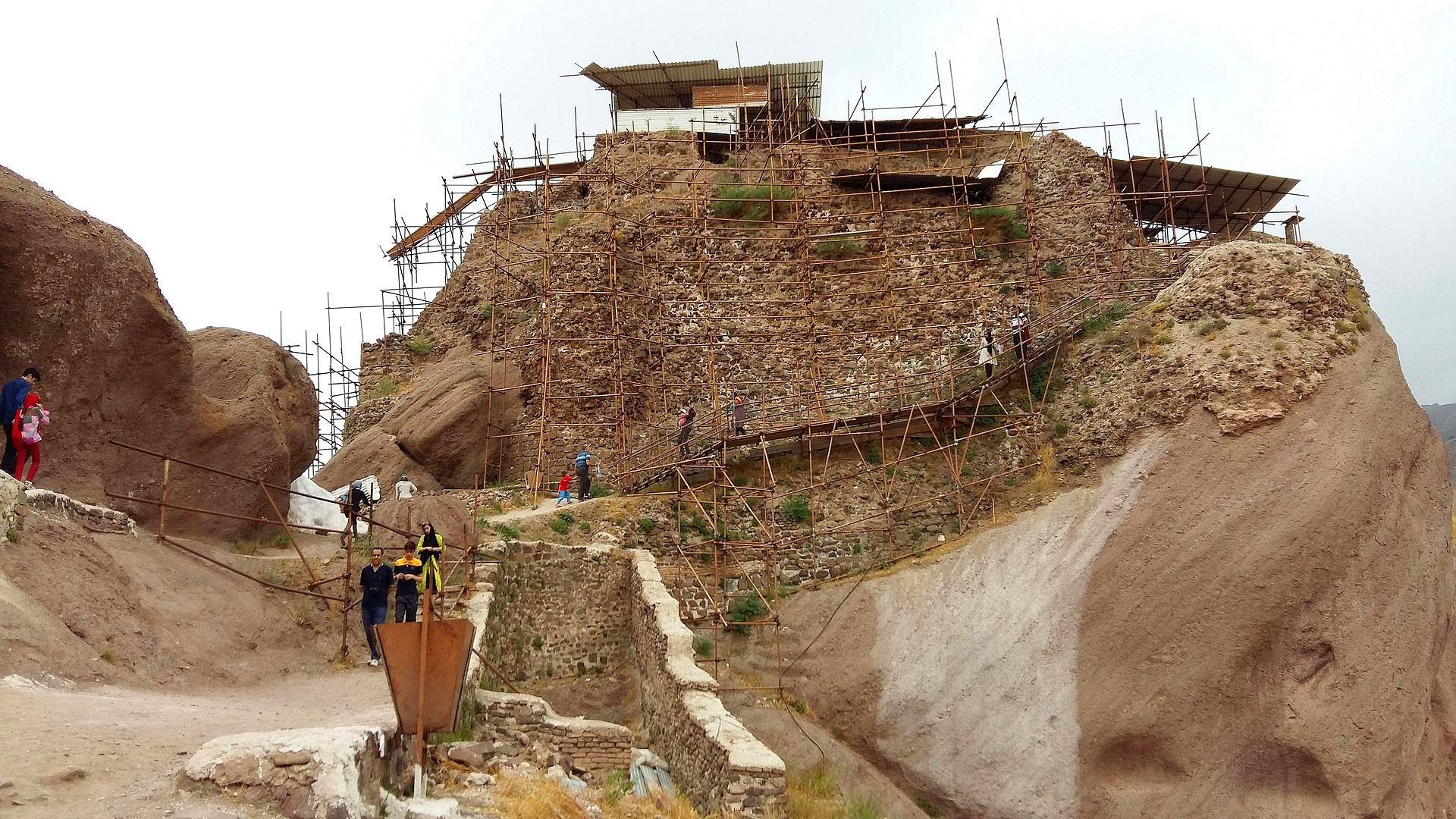
Hassan Sabbah made the Alamut Castle the headquarter of the Ismailis and spent the rest of his life hiding there, reading and writing. From Alamut, Hassan Sabbah fomented an open rebellion against the Seljuk Dynasty and his followers took and built several other castles in the region.
He organized military groups to oppose a fierce resistance to the dominating dynasty, with one specificity for which the Ismailis became famous: political assassinations.

Hassan Sabbah and his followers, known as “the Assassins”, organized the murder of many important political figures, such as viziers, caliphs, and crusaders. It is even said that Kind Edward I of England narrowly escaped an Assassin’ attack. One of the most famous assassinations led by Hassan Sabbah’s sect took place in 1092, when one of his followers, disguised as a dervish, killed the Grand Vizier Nizam al-Molk on his journey from Isfahan to Baghdad.
The Legend of the Assassins

What are the Nizari Isma’ilism?

Nizari Isma’ilism is a branch of Isma’ilism, a sect within Shia Islam. Originating in the 8th century, it was established by Isma’il ibn Jafar, the seventh Shia Imam. The Nizaris diverged from mainstream Isma’ilism following a succession dispute, leading to the founding of their own distinct community. Known for their strategic fortresses and unconventional tactics, the Nizari Isma’ilis gained notoriety during the medieval period, particularly under the leadership of Hasan-i Sabbah and the establishment of the Assassins. Today, the Nizari Isma’ilis continue to exist as a minority community, primarily in Iran and South Asia.
The Nizari Ismailis recognize Hassan bin Ali as a Trustee Imam (imam al-mustawda) rather than a Hereditary Imam (imam al-mustaqarr). This distinction is evident in their daily prayers, recited three times a day. While Hassan bin Ali is esteemed as part of the Prophet’s personal family (Ahl al-Bayt), his name is not included in the lineage of hereditary Imams from the first Imam, Imam Ali, to the 49th Imam, Prince Karim al Hussaini. Including Hassan bin Ali would necessitate acknowledging Prince Karim as the 50th Imam, contrary to his recognized status as the 49th Imam.

Western travelers have recorded in their travelogue the story of the Alamut Castle, often adding a hint of mystery. Marco Polo recalls the story of an “old man of the mountain” that would give drugs to his followers and promise them a paradise full of women and wine if they died following his orders (with suicide killings).

Marco Polo, believed to have been born in Venice around 1254 CE, grew up under the care of his aunt and uncle following his mother’s death. His father, Niccolo, a Venetian merchant, was away in the Middle East for business before Marco’s birth. Along with his brother Maffeo, Niccolo traveled extensively across Asia, even meeting the Mongol emperor Kublai Khan, who invited them to serve as ambassadors. The brothers returned to Venice in 1269, meeting Marco for the first time. In 1271, a 17-year-old Marco embarked on an epic journey to Asia with his father and uncle, traversing through places like Constantinople, Baghdad, Persia, Kashgar, China, and Burma. After 24 years and a journey of 15,000 miles, they returned to Venice, laden with wealth.
Upon their return, they found Venice embroiled in a war with Genoa. Marco Polo was captured and imprisoned. During his imprisonment, he narrated his extraordinary experiences to Rustichello da Pisa, a fellow prisoner. Rustichello compiled these accounts into ‘The Travels of Marco Polo’, a book that introduced Europeans to Asian practices like paper money and coal burning.

The book also touches on the Assassins, a sect of Nizari Ismailis from Persia and Syria, formed in the late 11th century. Under the leadership of Hassan-i Sabbah, they captured several mountain fortresses, posing a significant military challenge to the Sunni Seljuq rulers in Persian territories.
While there are many stories saying Hassan Sabbah’s followers would have been under the influence of drugs and alcohol to obey him, historians believe a large part of these tales are exaggerations. Yet, these legends have stayed in the popular culture, and served as an inspiration for the Assassins Creed video games and Prince of Persia movie.
The End of Alamut Castle’s Glory


The story of the Assassins took an end in 1256, when the Mongols invaded the region and took over the castle. Put under siege, the Assassins eventually had to submit.

Inhabitants of the castle were killed, the large library where scientific scholars and philosophers used to study was burned, and the castle itself was gradually destroyed as kings kept searching for treasures that would have been hidden by the Assassins.
Later, the Alamut Castle also became a place of exile for political opponents and turned into a prison under the Safavid Empire. Left abandoned, it was only in the 19th century that the ruins of the castle were rediscovered.

Alamut Castle Across Movies, Games, and Series
Alamut Castle, located in Iran, is historically significant and has served as a rich source of inspiration in various forms of media, particularly due to its association with the legendary Hashshashin (Assassins) and their leader, Hassan-i Sabbah. Here are some notable movies, games, and series that have drawn from the mystique of Alamut Castle:
Movies
“Prince of Persia: The Sands of Time” (2010)

This fantasy film, based on the video game of the same name, incorporates elements of Alamut in its setting. The story revolves around a prince who teams up with a princess to stop a villain who poses a threat to the world with a special dagger that can reverse time. The castle and its surroundings are portrayed as mystical and central to the plot’s ancient secrets.
Games
Assassin’s Creed” series (2007 onwards)

Although not directly named, the spirit and historical backdrop of the Alamut Castle are deeply woven into the narrative of this popular video game series. The games explore themes of rebellion against corruption and control, similar to the ethos of the Assassins based in Alamut. The ideology and tactics of the historical Assassins influence key elements of gameplay and storytelling.
“Prince of Persia” game series

Starting with the original game in 1989 and through various sequels, these games often feature palaces and fortresses inspired by Middle Eastern architecture and myths similar to those associated with Alamut. The series blends fantasy with historical elements, crafting a narrative that echoes the tales of Alamut’s legendary status.
TV Series
“Marco Polo” (2014-2016)

This Netflix series, while primarily set in the Mongol Empire, touches upon the Hashshashin and their interactions with major historical figures. Although it doesn’t depict Alamut Castle directly, it delves into the influence and the mystique of the Assassins who were based there.
“The Assassins” (2024)

The Assassins TV series (Persian: حشاشین) focuses on the stories and legends surrounding the Hashshashin and their stronghold, Alamut Castle. Set in the heart of the medieval Islamic world, the series promises to delve into the complex politics, covert operations, and philosophical ideologies that defined the secretive sect.
Books
“Alamut” by Vladimir Bartol

This historical novel is set in the fortress of Alamut and follows Hassan-i Sabbah, the legendary leader of the Assassins. The book delves into the philosophy and daily life of the Assassins, blending historical facts with fictional elements to create a compelling narrative that has captivated readers for decades.
“The Assassin Legends: Myths of the Isma’ilis” by Farhad Daftary

This scholarly work explores the various legends and myths associated with the Isma’ilis and their most famous stronghold, Alamut Castle. It’s a crucial read for anyone interested in the historical and mythological aspects of the Assassins.
“The Secret Order of Assassins: The Struggle of the Early Nizari Isma’ilis Against the Islamic World” by Marshall G. S. Hodgson

This book provides a detailed historical study of the Nizari Isma’ilis, focusing on their strategies, religious beliefs, and the role of Alamut Castle as their headquarters. It offers an in-depth look at the socio-political context of the Assassins’ era.
“Eagle’s Nest: Ismaili Castles in Iran and Syria” by Peter Willey
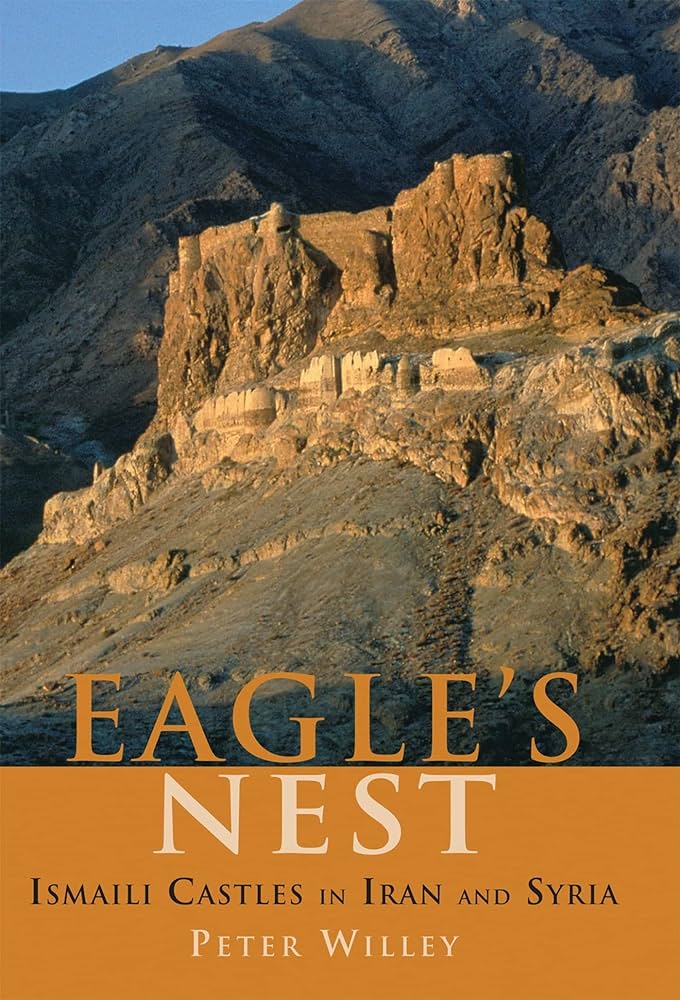
This work focuses on the architectural and strategic significance of Ismaili castles, including Alamut. It combines historical analysis with architectural study, providing insights into the physical and geographical aspects that made Alamut a formidable fortress.
How and When to Visit the Alamut Castle?
The Alamut Castle is one of the most significant castles in Iran, worth visiting for its historical significance and its beautiful natural surroundings. It is located in the northwest of Qazvin Province, above the small village of Moallem Kalayeh, some 230 kilometers away from Tehran (about 4 hours of road).
Expect some hiking to reach the Assassins’ fortress, as it is located on top of a hill, about 2000 meters’ height. It’s a moderate hike that requires a proper equipment (comfortable shoes). You’ll have to climb about 400 stairs with a slope of 35 degrees, for about 1 to 2 hours depending on your walking pace.
As it’s at a high altitude, the best time of the year to visit the Alamut Castle is during late spring and summer. While the view is amazing, the trail is often closed during winter due to heavy snow and reaching the top of the hill at that season requires professional training.
Final Words
In conclusion, Alamut Castle stands not only as a testament to medieval Persian architecture and strategic military planning but also as a beacon of intrigue and historical lore. Its captivating history as the base of the Assassins, set against the stunning backdrop of Iran’s Alborz Mountains, continues to fascinate scholars and tourists alike. Whether you are a history enthusiast, an adventure seeker, or simply a lover of breathtaking landscapes, Alamut Castle offers a compelling destination. For a truly immersive experience, consider exploring this ancient site with expert-guided tours from SURFIRAN. Discover for yourself the enduring legacy of Alamut Castle, where history and legend intertwine amidst the ruins.
